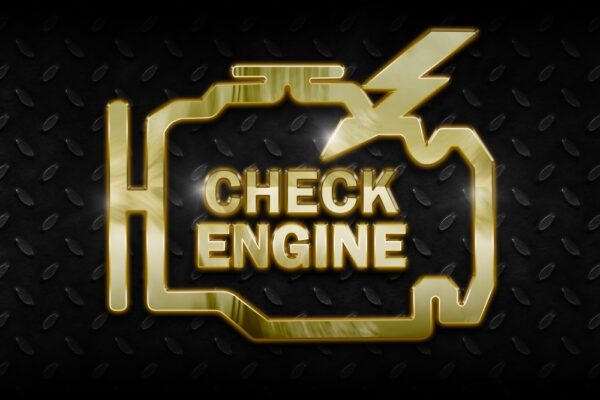
P04A2 High signal of the exhaust gas pressure control valve B
Content
P04A2 High signal of the exhaust gas pressure control valve B
OBD-II DTC Datasheet
Exhaust gas pressure regulating valve "B" high
What does this mean?
This Generic Transmission / Engine DTC usually applies to diesel engines including, but not limited to, certain Ford Powerstroke, Dodge Cummins, Mercedes, Nissan, and VW vehicles.
This code can also apply to trucks equipped with diesel engines and dealer-installed exhaust brakes.
A valve is placed in the exhaust stream downstream of the exhaust manifold to generate heat in the form of back pressure in the exhaust. This heat and / or back pressure can be used to warm up during a cold start. It can also be used to counteract the pressure in the cylinders emanating from the engine's cylinders from the exhaust gases, thereby slowing the engine and the vehicle along with it. This is especially useful when towing.
This code strictly refers to the fact that the input signal from the exhaust pressure sensor does not match the intake manifold pressure or ambient air pressure during normal driving. This could be a mechanical fault or an electrical fault, depending on the vehicle manufacturer.
Troubleshooting steps may vary depending on the manufacturer, the type of exhaust back pressure regulator and the colors of the wires to the control solenoid. Consult your specific vehicle repair manual to determine which valve "B" is for your particular application.
symptoms
Symptoms of a P04A2 engine code may include:
- Malfunction Indicator Lamp (MIL) illuminated
- Lack of power
- No engine braking
- Longer than usual warm-up time for a cold engine
Possible Causes P04A2
Usually the reason for installing this code is:
- Stuck exhaust back pressure valve
- Limited exhaust
- Open in the ground circuit to the exhaust gas pressure sensor
- Open in signal circuit between exhaust pressure sensor and PCM
- Short circuit on voltage in the signal circuit of the exhaust gas pressure sensor
- Faulty exhaust pressure sensor - internal short to voltage
- Clogged exhaust gas pressure sensor sensor tube
- The turbocharger may be overloaded.
- PCM may have crashed (unlikely)
Diagnostic and repair procedures
A good starting point is always to find a Technical Service Bulletin (TSB) for your specific vehicle. The vehicle manufacturer may have a flash memory / PCM reprogramming to fix this problem and it's worth checking it out before you find yourself on the long / wrong path. PCM = Powertrain Control Module.
Then locate the “B” exhaust pressure sensor on your specific vehicle. Once detected, visually inspect the connectors and wiring. Look for scuffs, scuffs, exposed wires, burn marks, or molten plastic. Disconnect the connectors and carefully inspect the terminals (metal parts) inside the connectors. See if they look rusty, burnt, or perhaps green compared to the usual metallic color you're probably used to seeing. If terminal cleaning is required, you can purchase electrical contact cleaner at any parts store. If this is not possible, find 91% rubbing alcohol and a light plastic bristle brush to clean them. Then let them air dry, take a dielectric silicone compound (the same material they use for bulb holders and spark plug wires) and place where the terminals make contact.
Also, if your vehicle is equipped, remove the sensor tube that connects the exhaust back pressure sensor to the exhaust manifold. Try to break through this. If this is not possible, this is also a possible reason for this code to appear.
If you have a scan tool, clear the diagnostic trouble codes from memory and see if the code returns. If this is not the case, then there is most likely a connection problem.
If the code returns, you will need to check that the turbocharger boost is working properly. You will need a scan tool that can read the turbocharger boost pressure. You may need to monitor the intake manifold pressure as this will give the same information. Pay attention to the pressure with the key on, but with the engine off. Then start the engine, drive the vehicle at a safe speed, and then momentarily accelerate the engine to wide open throttle, making sure the engine speed does not exceed 2500-3000 rpm. You should note a change of at least 18 psi, possibly more depending on the vehicle manufacturer and model year.
If this test passes or you were unable to check the turbocharger boost, we will need to check the sensor and related circuits. There are usually 3 wires on the exhaust pressure sensor.
Disconnect the harness from the exhaust pressure sensor. Use a digital volt ohmmeter (DVOM) to check the 5V power supply circuit going to the sensor to make sure it is on (red wire to 5V power supply circuit, black wire to good ground). If the sensor is 12 volts when it should be 5 volts, repair the wiring from the PCM to the sensor for a short to 12 volts or possibly a faulty PCM.
If this is normal, with the DVOM, make sure you have 5V on the exhaust pressure sensor signal circuit (red wire to sensor signal circuit, black wire to good ground). If there is no 5 volts on the sensor, or if you see 12 volts on the sensor, repair the wiring from the PCM to the sensor, or again, possibly a faulty PCM.
If normal, check that the exhaust pressure sensor is properly grounded. Connect a test lamp to the 12 V battery positive (red terminal) and touch the other end of the test lamp to the ground circuit that leads to the exhaust gas pressure sensor circuit ground. If the test lamp does not light up, it indicates a faulty circuit. If it comes on, wiggle the wiring harness going to the exhaust pressure sensor to see if the test lamp blinks, indicating an intermittent connection.
If all previous tests have passed and you keep getting the P04A2 code, it will most likely indicate a faulty exhaust pressure sensor, although a closed exhaust back pressure valve is stuck or a failed PCM cannot be ruled out until the sensor is will be replaced.
Related DTC discussions
- There are currently no related topics in our forums. Post a new topic on the forum now.
Need more help with the p04A2 code?
If you still need help with DTC P04A2, post a question in the comments below this article.
NOTE. This information is provided for informational purposes only. It is not intended to be used as a repair recommendation and we are not responsible for any action you take on any vehicle. All information on this site is protected by copyright.

